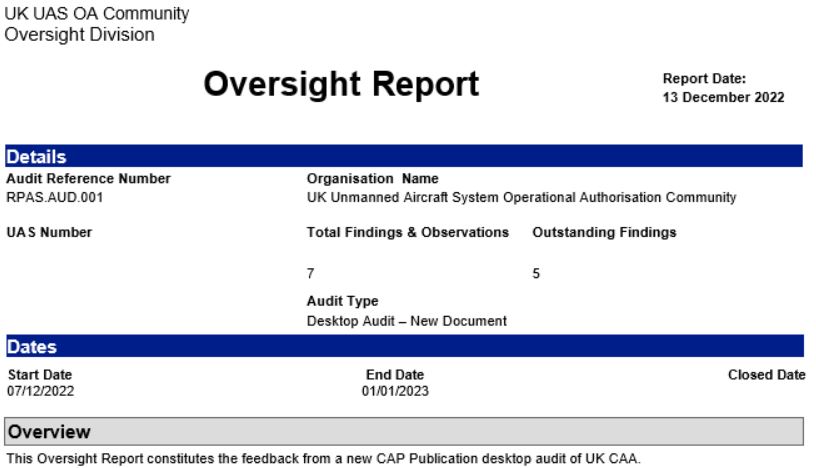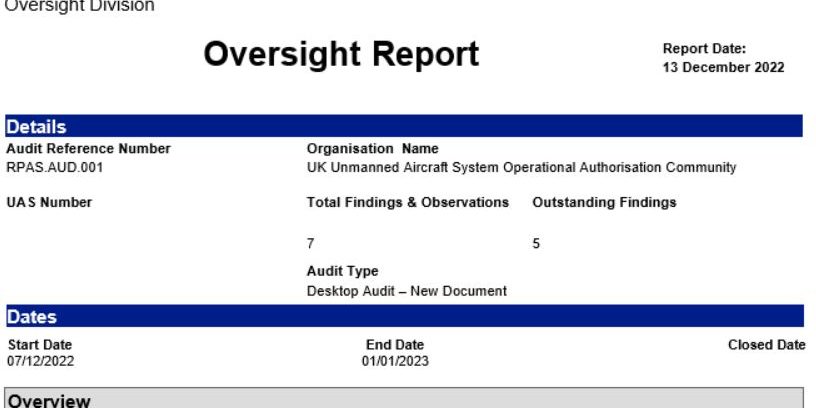 Oversight Report of CAP 722H
Oversight Report of CAP 722H
Specific Category Operations: Pre-defined Risk Assessment Requirements, Guidance & Policy
Humans are amazing. The 9 months gestation period we have, compared to our size is considered pretty long. Long gestation is more common as you move up the intelligence scale and also as an animal gets larger.
Elephants have the longest gestation period of all at between 18 and 22 months.
However, the gestation period of the CAA document CAP722H “Unmanned Aircraft Systems Specific Category Operations Pre-defined Risk Assessment Requirements, Guidance & Policy” manages to beat even this perennially popular pachyderm.
Professional (no, I won’t be drawn into the word commercial) drone operators have been working against an Operational Authorisation based on a Pre-Determined Risk Assessment since 11:00pm on 31st December 2020. That’s when the UK completed its Brexit transitional period and ushered in the retained EU regulations. The trouble is that nobody really knew what this risk assessment contained… until 7th December 2022 when version one of this document was released into the wild.
The CAP 722H document can be found here.
make no mistake, this document is of critical importance to the 3699 operators working against a PDRA01 Operational Authorisation as it contains details of all the mitigations you will adopt to reduce risks to property and people when flying your drone. This blog was originally going to be a guide through the document to help newcomers and old hands alike to understand the PDRA system and PDRA01 itself.
Unfortunately, I find myself having to essentially reject the document as it stands. I am in a position to do so since, to my knowledge there is no requirement to operate against it until my OA is updated in line with the document management process within the CAP itself. But others won’t be so lucky and will soon have signed up wittingly or otherwise, to a set of potentially conflicting arrangements.
No pretty pictures for this blog I’m afraid. The subject is too serious.
Instead, I provide a link to an Oversight Report I have taken the liberty of producing which aims to outline some of the failings of the document. It cannot hope to be comprehensive as I am one man, with a full-time job and family to consider. But it should be enough for somebody within the CAA (should they be interested enough to check), to realise that the document may require a review.
While they are at it, some form of consultation with the stakeholders they seek to regulate would be nice.
CAA Reaction
Before this blog was published, I approached the CAA, provided them with a copy and requested feedback. What I received was standard fare, but does point out that a team is dealing with feedback, which, perhaps unsurprisingly, appears to be of a high enough volume to preclude individual feedback. But, importantly, they state that there is an intention to “communicate the actions we intend to take in this area to the broadest audience possible”.
I would suggest that any action needs to be right first time (or perhaps second time is more appropriate here). I have seen information which suggests that the CAA is giving operators until 31st of January 2023 to update their processes. In other words if you are due for renewal after this date, your OM will need to reflect 722H. With the CAA’s own SLA of 28 working days and with Christmas on the way, this suggests that they will either have to extend that timescale or get the “communication of actions” out to the OA holding community by Monday 19th December 2022.
In the meantime, while I am being asked to update the ever popular Eyeup guide to updating your Ops Manual, at the moment I am unable to do so unless we want everybody’s manuals to be as big a contradictory mess as 722H.
My oversight report can be found tucked away in my Onedrive cache below. Maximise the document to access it.






